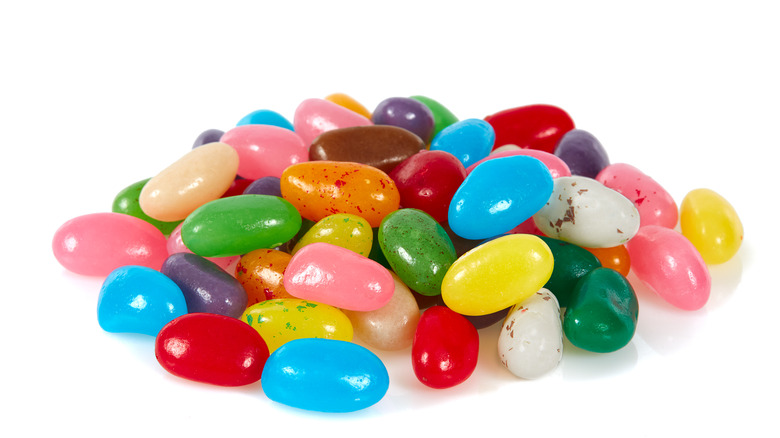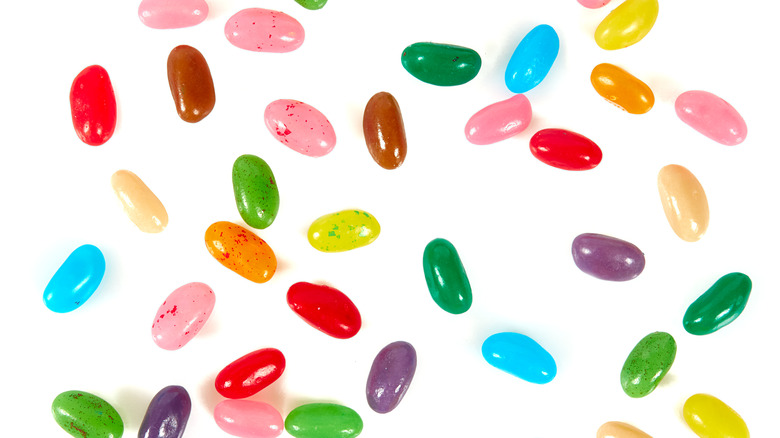The Strange Ingredient Used To Make Jelly Beans Shiny
Jelly beans are some of the most beloved, iconic, and varied candies anyone could get their hands on. They're instantly recognizable, they have so many different flavors both tasty and disgusting (looking at you, Bertie Bott's Every Flavour Beans), and they don't go bad. Some candy will melt in the heat or will lose form over time, but not jelly beans, and it's all thanks to the resin around the jellybean.
According to Allrecipes, this particular resin is used because it provides a structural seal for the jelly beans that keeps them from melting and is clear enough to allow colors to show through. This resin is so effective it's actually used on a whole host of different candy products, including Milk Duds, Raisinets, Junior Mints, Whoppers, Mike and Ikes, and more. It's common for bakers to use this kind of confectioner's glaze to coat fondant and icing for an extra shine and another layer of protection, and sometimes fruits are coated in it for similar reasons.
More normal than you think
According to Culinary Lore, shellac is also called confectioner's glaze (this is what it's typically listed as in the ingredients list), pure food glaze, or natural glaze, and it's what is responsible for giving a lot of our everyday food products their shiny outer shell. The odd thing about shellac is its origin: Shellac is a resinous substance that is secreted by an insect called the lac bug, per Mental Floss. Female laccifer lacca produce and secrete shellac from the trees of their native habitats of Southeast Asia and Central America, where it is harvested and processed into the glaze jelly beans end up covered in.
Unless you're vegan and are striving to avoid all animal products, though this might sound weird, it's not really that big of a deal. Of course, shellac is not harmful to consume, but the use of animal byproducts is also not all that uncommon. Things like beeswax and honey are also insect byproducts that people don't bat an eye at. Shellac is everywhere, so the next time you're taking your chances on a dubiously colored jelly bean, take a second to thank the bugs that make it possible.

